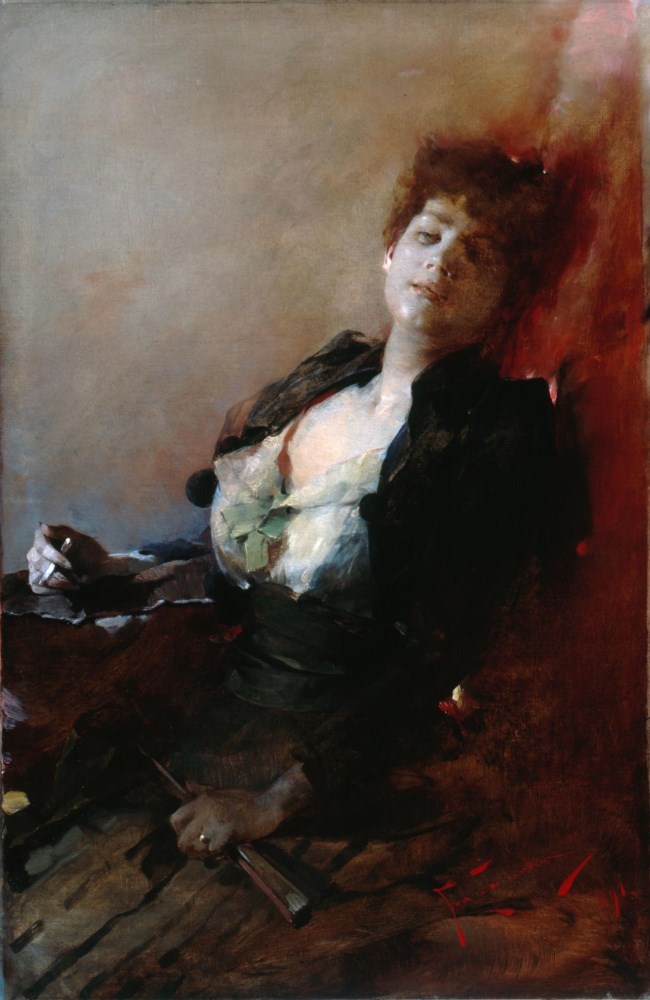Description:
Franciszek Żmurko (1859-1910) received his education in Lviv from Franciszek Tepa, then in the Krakow School of Fine Arts from Jan Matejko, at the Vienna Academy and the Academy in Munich. He visited Rome, Paris, St. Petersburg, Nuremberg. He exhibited, among others, in Krakow, Warsaw, St. Petersburg, Lviv, Vienna, Berlin, Amsterdam, The Hague, Chicago, San Francisco. The influences of Jan Matejko are visible in his first historical paintings. After 1880, the subject of Żmurko’s artistic interest became primarily the images of women. Not only those from higher circles, but also representatives of the middle class enjoying less unblemished reputation. Hence, many of his paintings exude eroticism. Interestingly, it was these that earned him the greatest recognition among the high-born salon visitors. “It was a talent from God’s grace, an inspired artist, with broad wings, a painter-poet, who, like no one before him and few after him, was able to sing the magical charm and beauty of the female body.”*****
Description of the painting:
The painting “Lady with a Cigarette” was created in the year of Franciszek Żmurko’s stay in Florence. The painting is considered one of the more interesting portraits created by him. Attention is drawn primarily to the tangible layer of painting of the presentation. Fully showing the admired technique of Żmurko*. The presentation has an intimate character, not free from ambiguity. The fan and cigarette held by the woman show the changing position of women at the turn of the century. They become visible signals of her emancipation. The free pose taken by the model intensifies the feeling of the inappropriateness of the image and the presence of the viewer looking at it.
The painting depicts a young woman. She is dressed in a white blouse with a deep neckline, a short black jacket and a dark, brown skirt. She was captured in a moment of rest. She holds a cigarette in her right hand and a closed fan in her left hand. A ring is painted on her finger.
The fan is a subject belonging mainly to women. In Eastern tradition, it was considered a kind of protective talisman**. From the 18th century it becomes a symbol of coquetry. It was used for flirting. An educated secret language of fans allowed communication with members of the opposite sex practically without using words – “love plays with a fan, as a baby with toys”. The process of folding the fan in front of the admirer meant indifference, an open fan – being in a marital state, a folded one – urging to make a decision and waiting for it***. Therefore, the fan was a characteristic object for representatives of higher social groups, an inseparable part of the costume, a “feminine scepter”, testifying to subtlety, but also moral ambiguity. The presentation of the fan in the hands of female figures next to the lit cigarette emphasizes the dissonance presented on the painting.
Cigarettes initially smoked only women in cities, mainly actresses and prostitutes. Public indulgence in this pleasure by the fair sex was considered highly inappropriate, let alone the portraiture with it. Towards the end of the 19th century, these views gradually changed. Smoking cigarettes is unequivocally associated with the emancipation of women. It emphasizes their autonomy and changing position in the social hierarchy****.
The dark color of the presentation, the free pose taken by the model and the attributes characterizing her seem to deepen the impression of introducing the viewer into the sphere of intimate ambiguity of the presented image.


